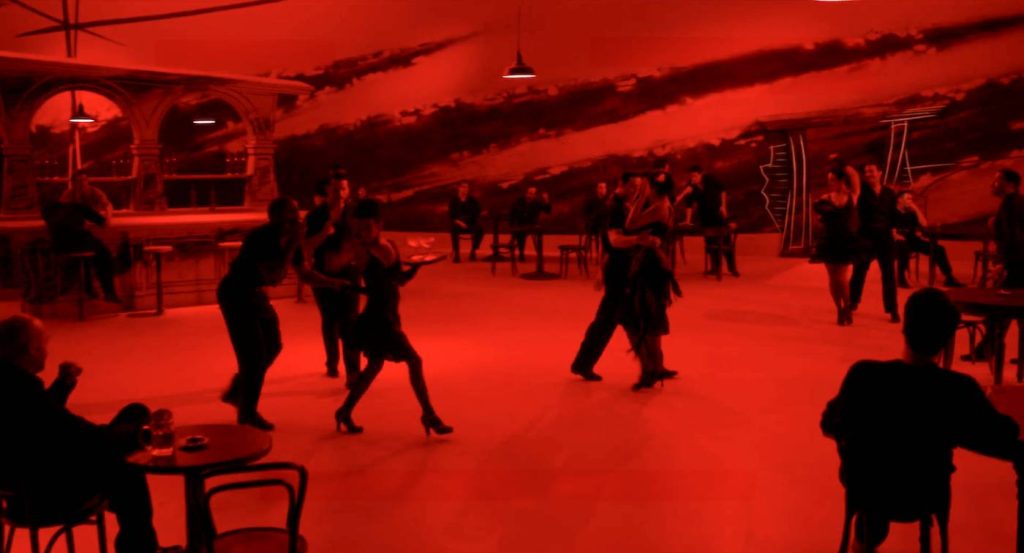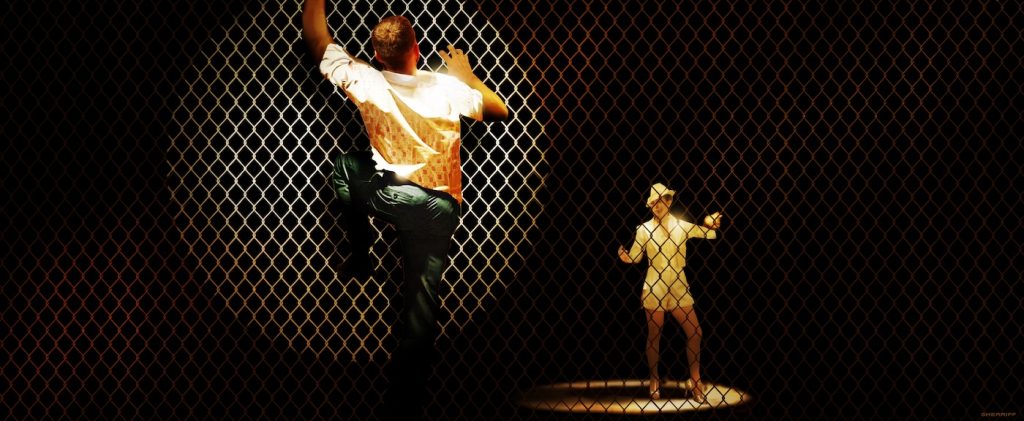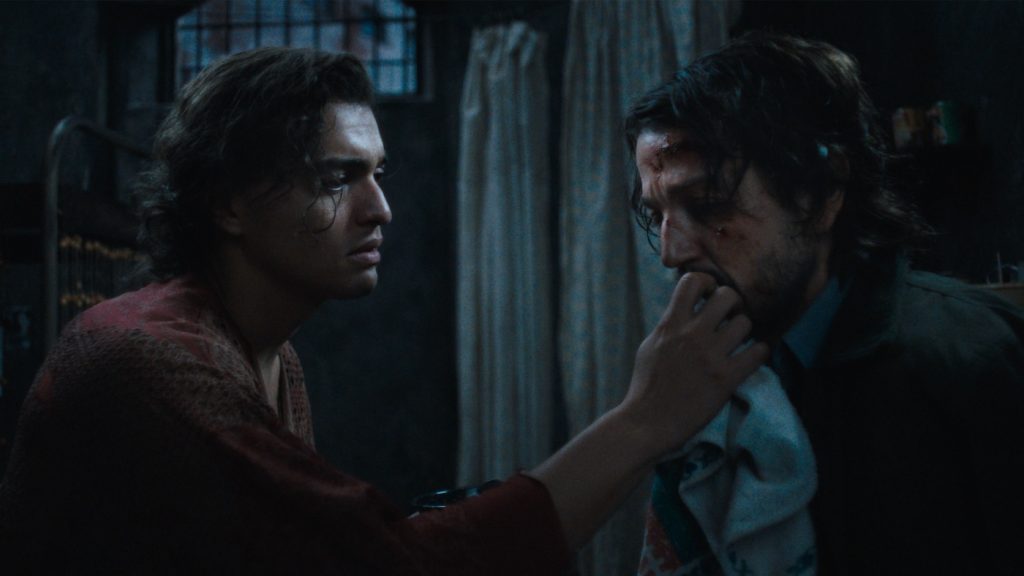Diego Luna: On Going From “Andor” to Argentina in “Kiss of the Spider Woman”
At one point during our discussion about his new film, Diego Luna likens the character he plays to a Matryoshka doll, the Russian wooden figures that nest within each other.
The reference is apropos for the film itself. Kiss of the Spider Woman began life as a 1976 novel by Manuel Puig, and as Luna points out, the haunting story of two vastly different men who form an unlikely bond when imprisoned together has spawned various iterations. “It is fascinating that this novel has inspired a play, there’s a film, a stage musical, and now there’s a film about the musical,” says the actor via Zoom while traveling to the set of Eleven Days, his latest film.
Directed by Bill Condon, the film adaptation of the Broadway musical also stars Tonatiuh and Jennifer Lopez as the enigmatic title character. Luna plays Valentín, a political revolutionary imprisoned in an Argentine jail, accused of trying to overthrow the current regime. As the film opens, he is joined by Tonatiuh’s Molina, a gay window dresser, convicted of lewd acts in public. To escape the trauma of confinement, Molina weaves tales about his favorite actress, Ingrid Luna, and what he believes was her masterpiece, the 1950s Technicolor musical “Kiss of the Spider Woman.” Initially, Valentín ignores these excursions into fantasy. But eventually, he can’t resist the magical tale with its colorful musical numbers that Molina details in all their CinemaScope glory. As he does, the relationship evolves into a love that changes both in ways neither thought possible.
Luna, who rose to fame in films such as Y Tu Mamá También and Frida, and has been thrilling Star Wars aficionados as Cassian Andor in the Disney+ series Andor, admits he knew little about the musical version. His only inkling was a plaque in his hometown.
“There is this beautiful theater in Mexico City, Teatro de los Insurgentes,” Luna explains. “I have worked in it three times. We have a tradition where every time a show reaches 100 performances, it receives a large plaque on the wall in the theater lobby. And I remember seeing Kiss of the Spider Woman. It starred Christian Bach.”
Once Luna read the script, he was immediately intrigued by the possibilities of a musical adaptation. “It was fascinating to find out what it represents,” continues Luna. “There was a feeling of, ‘Yeah, there’s room for a new approach, for something unique, different, and authentic to come out of this collaboration.’” It didn’t hurt that Condon was leading the collaboration. Luna knew he would be in good hands with the director who had ushered both Chicago and Dreamgirls to film.

“It’s all about who’s directing, whose perspective and point of view is gonna be celebrated,” continues Luna. “The opportunity to work with someone that had such an intense connection to the play, and to the book, and to the story in general, meant a lot.”
For Luna, it was a tale of two films. There were the colorfully splashy musical numbers. And there were the stark prison scenes. Up first was getting the choreography down, a challenge Luna admits was not exactly in his wheelhouse.

“You are not mistaken,” Luna laughs when asked about his lack of choreography experience. “I love dancing, but with a few tequilas, and with a good reason. But I’ve done films and a theater play with a little bit of dancing where I had to move my body.”
Rehearsals began on a cavernous New Jersey stage occupied by only a piano. Luna credits choreographer Sergio Trujillo with helping him find the right moves.
“I started working by myself, with just one dancer,” Luna says. “I don’t have a proper technique, the background, but I was comfortable once we were shooting. It took me a while to get there, to gain confidence. And Sergio was crucial for me.”

Luna says Lopez was also instrumental. He remembers Trujillo telling him what Lopez, a veteran dancer, would add.
“Sergio said something that I didn’t understand until she arrived, ‘Whatever you’re not bringing, she will bring. She’s gonna make you look great, because she’ll be so controlled that you’re controlled,” Luna says. “And it’s true. She was not only very generous but also really good at what she does. She was always helping me, giving me confidence, and making me feel great. And it is beautiful to see someone work that hard. It was a great example for everyone. No matter the challenge, she was always up to it.”

As important, Luna understood he wasn’t just going through the motions. The dance was telling a story. This is when Luna likened Armando, his musical character, to a Matryoshka doll.
“I’m this Mexican actor playing Valentín, right? And then Valentín happens to be the inspiration for the fictional actor appearing in a movie,” details Luna. “The guy dancing is a Mexican-American actor from the 1950s who is somehow related to Valentín because it all happens in Molina’s head. It’s a character, inside a character, inside another character.”
Diego credits the dance team, particularly Skizzo Arnedillo, with helping him create his persona for the musical numbers. “They helped me find a style that would differentiate my movie character,” Luna continues. “Armando had to bring his own thing. It was fun once I could do the steps this guy would have. Gladly, I have just three numbers in the film. I had little to prepare and more time to do it.”
The jail scenes were the antithesis of the big musical numbers. The set was deliberately confining. Locked in for weeks, the sun was a rare luxury. The only light Luna and Tonatiuh saw was the backlight shining through a tiny cell window.

“It allowed me to feel the struggle of these men and what confinement brings,” Luna says. “It’s what motivates these characters to go into the fantasy. It was interesting to try to find new ways to approach the same space, finding different scenarios inside the jail. We were saying, ‘How do we shoot this next scene? I mean, there are just two beds. What are we doing now?”
Luna believes the tight space helped build intimacy. So did shooting the scenes in order.
“We got to know each other as performers, as actors, as people. We spent a lot of time together. Both of us were far away from home, driving to the set every day together,” Luna remembers. “There was a very organic approach to the development of this love story.”
When asked to compare his Kiss of the Spider Woman character to his portrayal of Andor, Luna answers that he approached one more realistically than the other. But not the one we might suspect.
“Valentín lives in a fantasy movie. Living in the fantasy that Molina invites Valentín into gave us a lot of freedom as actors. We could play with the tone,” Luna explains. “Andor is supposed to be a fantasy, but our goal is to make it as realistic as possible, as grounded as possible. You have to forget you are in this galaxy far, far away.”

But Luna also sees a connection. “When the time comes to react, to join, to believe they can be part of change, they both make the right choice,” he says.
Luna is proud of the story Kiss of the Spider Woman tells and hopes it will inspire audiences not to be afraid to feel, to open up to others, and, in the end, open up to themselves. “It’s a beautiful film about not letting fear drive you, which I think is something crucial to say today,” he adds.
Perhaps just as important, the film is a testament to why Luna became an actor in the first place. “I love it because it’s a homage to film and to theater. I come from a theatre family. It’s what I dedicate my life to, and what I love the most,” he says. “I’m always pleased to be part of a story that celebrates my craft and the possibilities of learning from telling stories to others.”
Featured image: DIego Luna and Jennifer Lopez in “Kiss of the Spider Woman.” Courtesy Roadside Attractions



